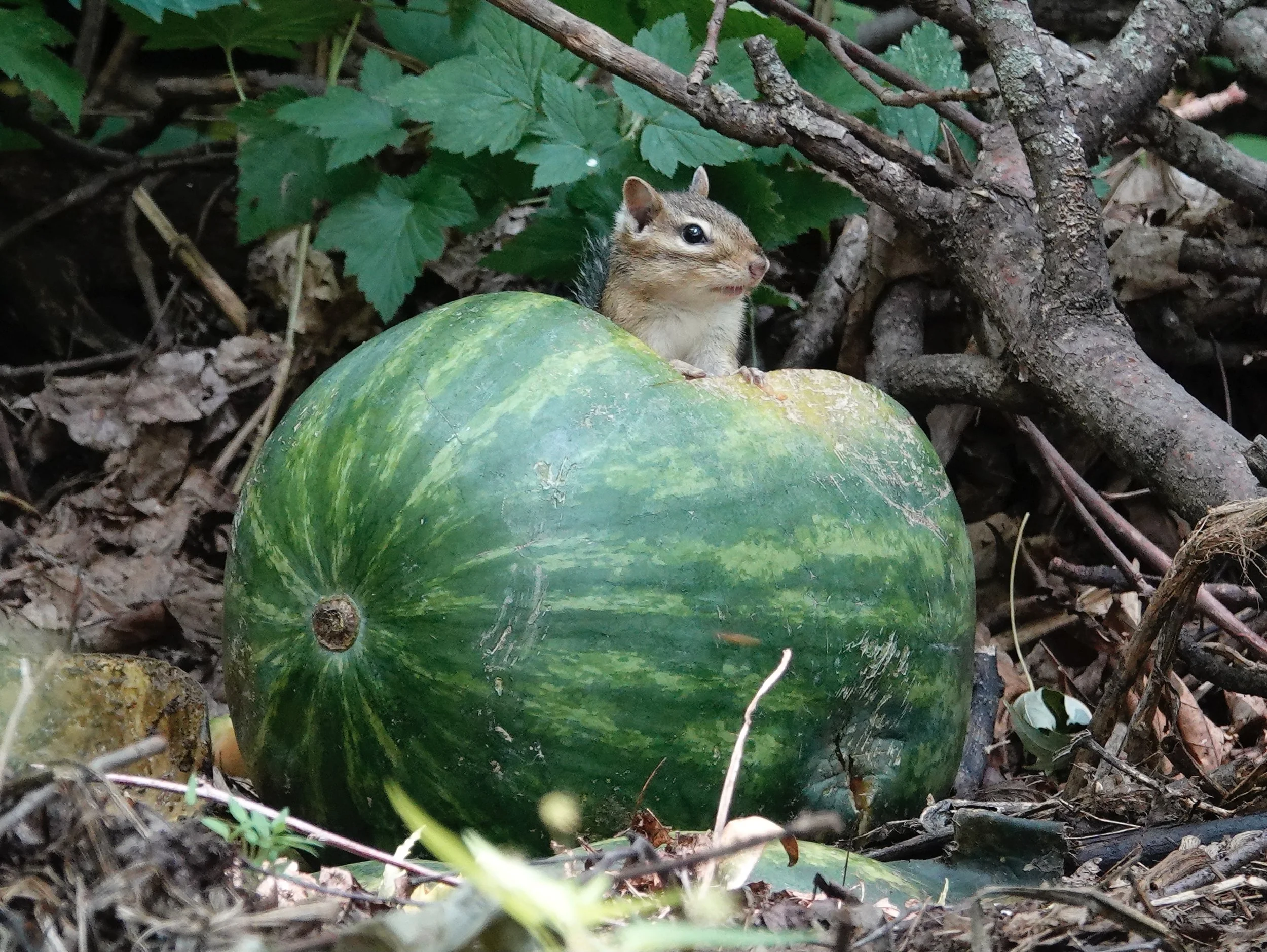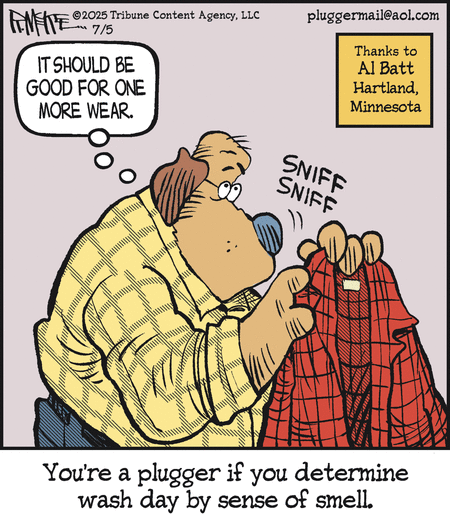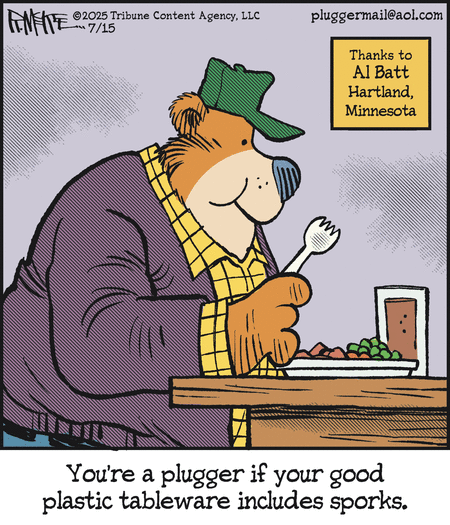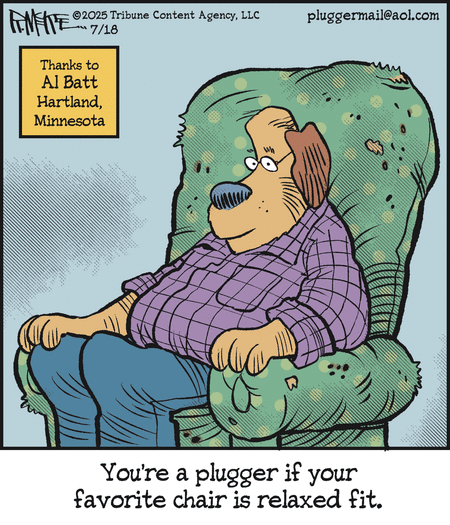Naturally
My neighbor Crandall enjoys watching true crime documentaries. That’s what he says he’s doing when the squirrels swipe the seed from one of his bird feeders.
A flock of starlings filled a tree. They were noisy, definitely not the silent majority. They are complex learners and were likely sharing the news of the day, the locations of predators, food sources, prime roosting sites, their hopes and dreams, and their frustrations with dunderheaded humans.
A good part of my thornapple tree broke off and fell to the ground. It had succumbed to peer pressure. The winds have damaged many trees and limbs. The tree’s fruit had been a magnet for earfuls of cedar waxwings.
A lot of birds around the world are starting their days earlier than ever, because of unnaturally bright skies caused by light pollution. They vocalize about 20 minutes earlier in the morning and stop vocalizing about 30 minutes later in the evening, according to Neil Gilbert, a wildlife ecologist with Oklahoma State University. Gilbert and Brent Pease of Southern Illinois University analyzed millions of recordings of birdsong to determine their findings.
Thanks to a mild winter, which helped the winter survival of the hens, and the drier, warmer spring conditions that led to better nesting and brood-rearing results, the number of pheasants counted in the DNR’s August roadside survey in Minnesota jumped nearly 50% from last year and 21% above the 10-year average. The most significant increase of 189% was recorded in southeastern Minnesota, with a surge in the southwest (86%), east central (82%), south central (40%), central (33%) and west central (19%) parts of the state. The pheasant population in Iowa is at a 20-year high, according to a roadside survey reported by that state’s DNR.
Q&A
“Is there such a thing as a seagull?” There are at least 28 gull species in North America, and not one of them is officially called a seagull. They are named Bonaparte’s gull, herring gull, ring-billed gull, Franklin’s gull, etc.
“How many states have the cardinal as their state bird?” Despite your brother-in-law saying that the northern cardinal is the state bird of 67 states before telling you to do your own research, the cardinal is actually the state bird of seven states: Indiana, Ohio, Illinois, Kentucky, North Carolina, Virginia and West Virginia.
“Why didn’t I have many hummingbirds at my feeders this September?” The first wave to depart is mainly made up of males, followed by the females and the young. Keeping your feeders up in the fall won’t cause them to delay migration. The strongest factor that causes their migration is day length. It’s normal for the hummingbird population in a location to vary from one year to the next. If the availability of natural sources of food or nest sites changed, it could cause the birds to look elsewhere. Free-roaming domestic cats are devastating to birds. A good wildflower crop could reduce the number of hummingbirds doing business at feeders. It could be possible that the neighbors’ snazzy hummingbird feeders with the giant flashing, neon arrows pointing to them might be drawing the tiny birds away from your yard.
“Does the yellow-bellied sapsucker suck sap?” No, they peck holes into trees and their tongues probe the sap for nourishment, which might include sticky insects.
“I hit a skunk with my car. How do I get rid of the smell?” Trade it in for one that smells like a new car. If your car smells like a skunk, you could use hydrogen peroxide, baking soda, vinegar or some commercial products to remove the smell.
“Can porcupines throw their quills?” Those prickly quills cannot be fired like arrows or bullets. The animal swats an intended party with a club-like tail, causing its quills to dislodge and inflict pain.
“I watched a Cooper’s hawk flying after a songbird in a dense woods. The chase had many twists and turns. Do those hawks ever hit trees?” Dashing through vegetation to catch birds is a dangerous lifestyle for an accipiter. In a study of over 300 Cooper’s hawk skeletons, 23% of them showed old, healed fractures in the bones of the chest, especially of the furcula or wishbone.
Thanks for stopping by
“Remember that your tracks are one strand of the web woven endlessly in the hand of God. They’re tied to those of the mouse in the field, the eagle on the mountain, the crab in its hold, the lizard beneath its rock. The leaf that falls to the ground a thousand miles away touches your life. The impress of your foot in the soil is felt through a thousand generations.”―Daniel Quinn.
“Someone needs to explain to me why wanting clean drinking water makes you an activist, and why proposing to destroy water with chemical warfare doesn’t make a corporation a terrorist.”― Winona LaDuke.
Do good.
©️Al Batt 2025
Eastern chipmunks are 8 to 10 inches long (including the tail) and weigh 2 to 5 ounces. Their underground burrows can reach 30 feet long and 3 feet deep. The entrance measures two inches in diameter, and chipmunks remove the fresh dirt from the opening to avoid being conspicuous to predators. Chipmunks use their cheek pouches as tote bags to carry food, and they can run 21 mph, but not while carrying a watermelon. Photo by Al Batt.
My local woolly bear caterpillar asks you to predict the winter.





